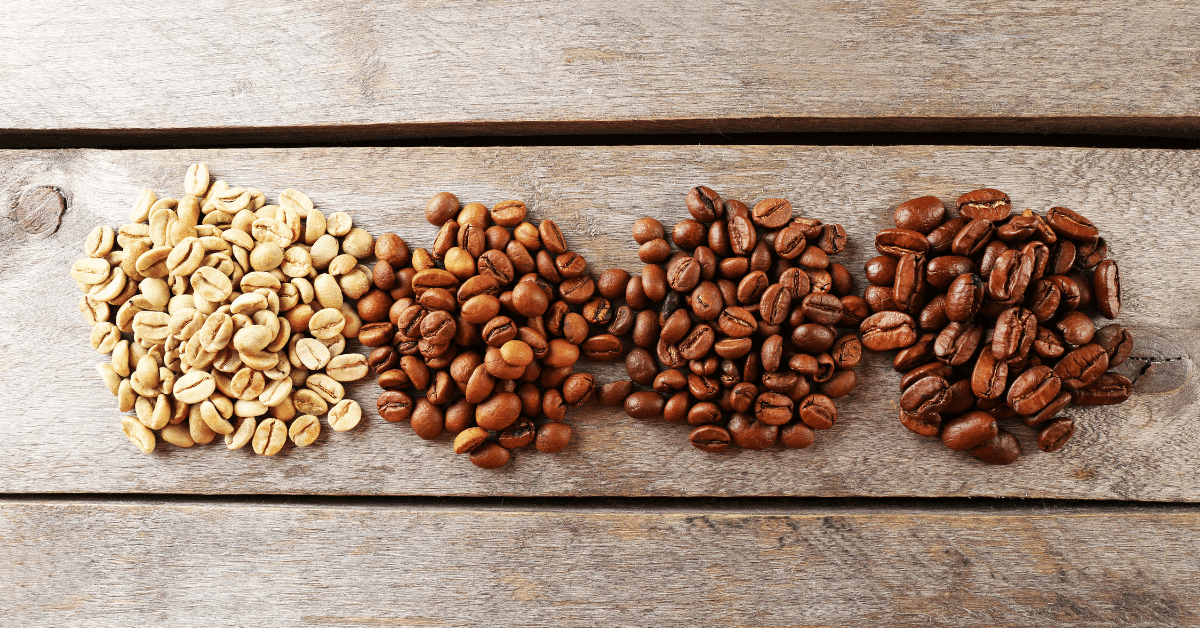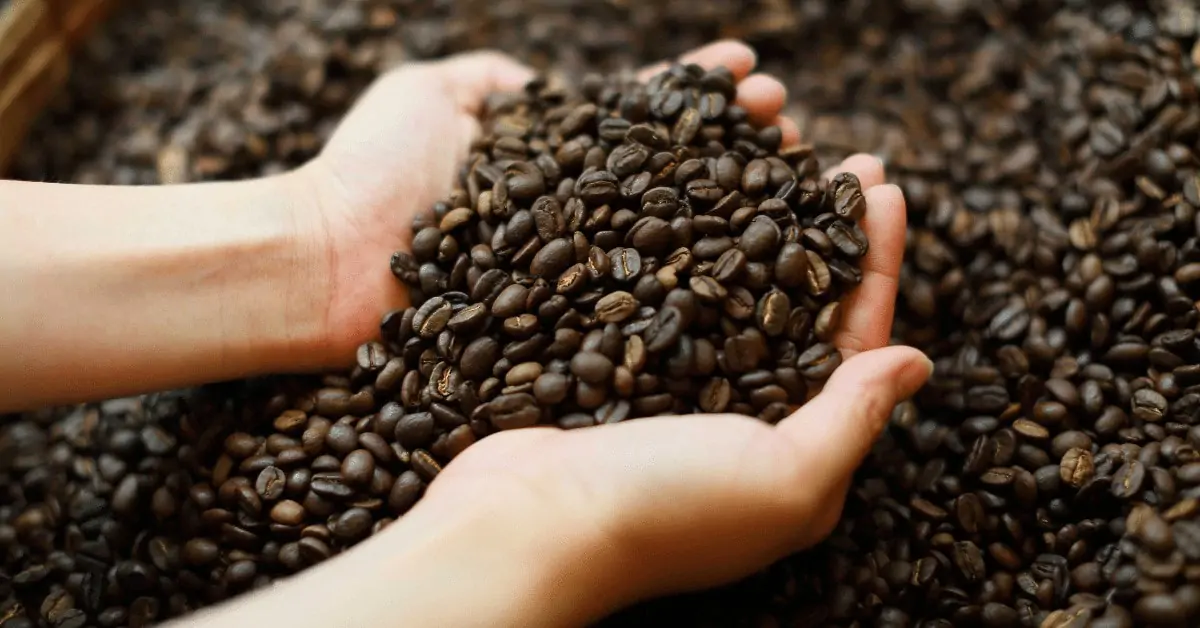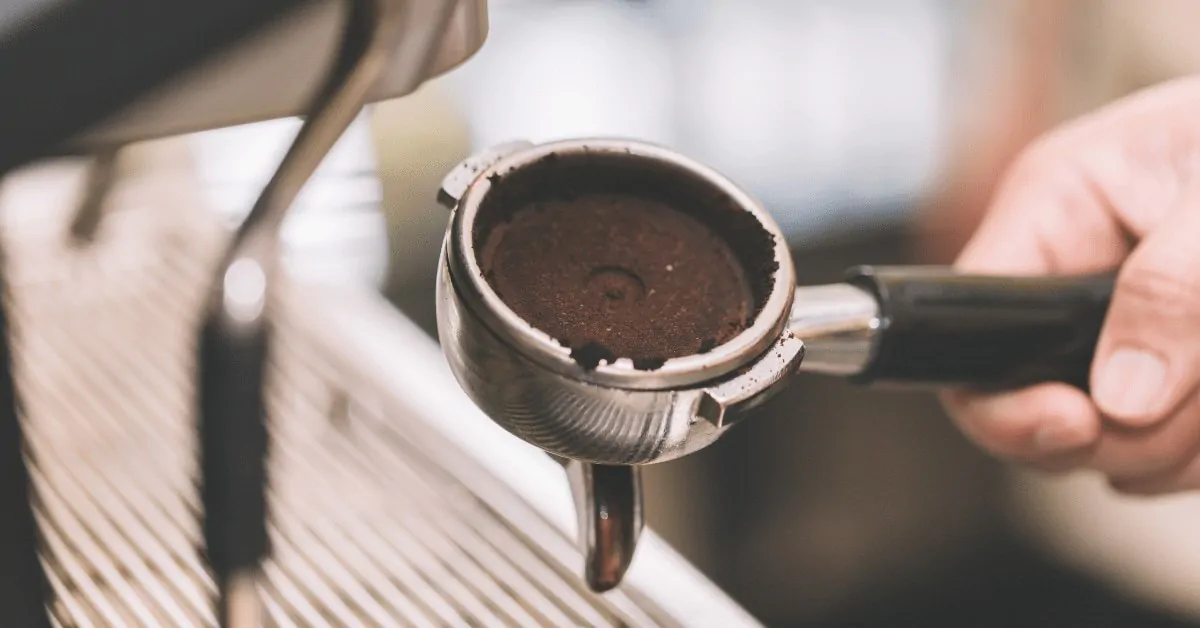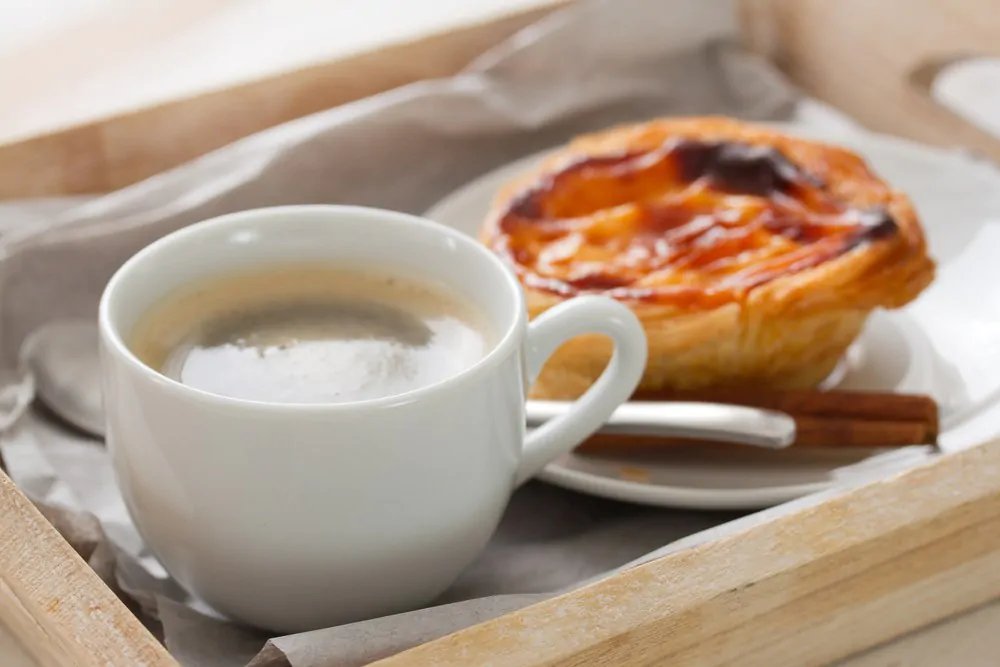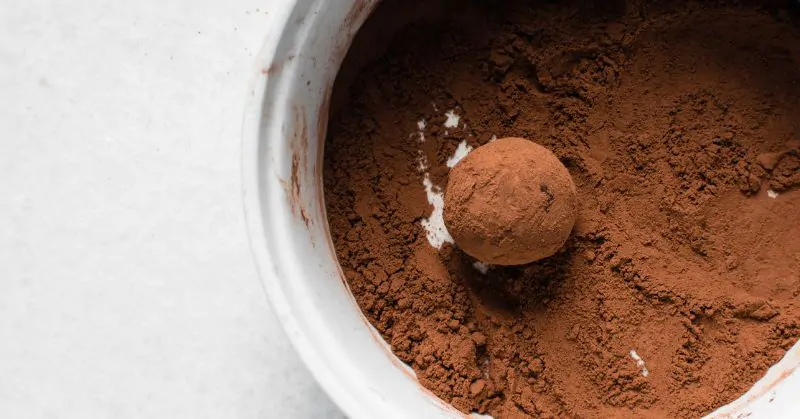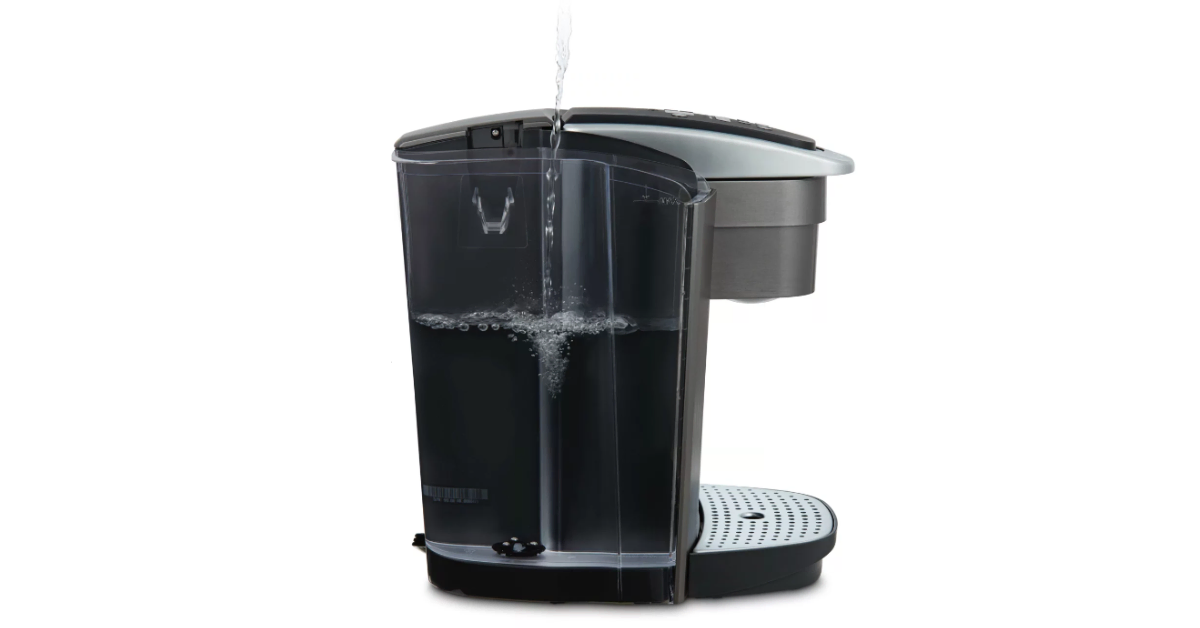Have you ever found yourself shopping for coffee, wondering which roast to buy?
Or, maybe you have a go-to roast, but you’re not sure if a different level might suit you better?
Well, good news.
You’ve come to the right place.
In this article, I’m going to give you the rundown on light roast vs dark roast so you can learn the difference and choose the right one for you.
Ready to get started?
Let’s take it from the top!
Light Roast Vs Dark Roast: In A Nutshell

Coffee beans can be roasted to varying degrees.
You’ve got light roasts, medium roasts, and dark roasts. Then you’ve also got medium dark roasts, and extra dark roasts, too.
Basically, there are 2 factors that affect a roast level:
- How long are the beans roasted for
- What temperature they’re roasted at
The longer they’re roasted for, and the higher the temperature they’re roasted at, the darker the roast will become.
Beans that are roasted at a lower temperature for a shorter amount of time are light roasts.
Those that are roasted at slightly higher temperatures for a little bit longer are medium roasts.
And, finally – beans that are roasted at the highest temperatures for the longest amount of time are dark roasts.
Each coffee roast level will give you a very different brew, with very different properties, and a very different flavor profile.
Which one works for you will largely come down to your own personal preference. That being said, certain roasts are better for certain brewing methods.
But, I’ll tell you all about that in just a minute.
Let’s dive a little bit deeper into each coffee roast level, to see what each one has to offer.
Light Roast Coffee

Light roasts are roasted at 356 – 401°F until the “first crack” happens.
This is when the coffee bean begins to crack and expand. It does this twice, but light roasts don’t ever get anywhere close to the “second crack.”
These roasts are lighter in color and body, but they retain a lot more of the coffee bean’s subtle flavors and aromas. These flavors can be fruity, citrusy, floral, earthy, or spicy – depending on the type of coffee bean and the region it’s from.
Generally, these roasts are favored when brewing filter coffee.
Why is that, you might be wondering?
Because filter coffee is brewed at lower temperatures than other methods, and the extraction times are longer. That allows you to really get the most out of the subtle aromas and flavors in a light brew.
That being said, there are no rules, and you can definitely use a light roast for other brewing methods as well. It all comes down to what works for you at the end of the day.
Medium Roast Coffee
Medium roasts involve temperatures of 410 – 428°F, and the beans are roasted until after the “first crack” – right before the “second crack” begins.
This roast is somewhat darker in color, and it has a fuller body than a light roast.
Their flavors and aromas, as well as their acidity, are very nicely balanced. It’s a nice middle ground between the subtle flavors of a light roast and the rich taste of a dark roast.
As far as brewing methods go, medium roast is super versatile. They’re an especially great choice when you’re brewing filter coffee, no matter which technique you’re using.
Medium Dark Roast Coffee
Beans that are roasted at 437 – 446°F fall into the medium dark roast category. The “second crack” has to have at least begun at this point. But, it could be anywhere up until around halfway through it.
The color of these beans is even darker, getting very close to the color of a dark roast. And the fullness of the body and roasted aroma and taste starts to closely resemble a dark roast, too.
At this stage, the coffee beans start to pick up new flavors from the roasting process. These types of flavors are unique to medium dark, dark, and extra dark roasts.
Medium dark roasts also start to develop some oily residue on the surface of the coffee beans. Although, it isn’t quite as pronounced as it is on dark roasts.
Generally speaking, medium dark roasts are better for pressure methods like espresso. With espresso, hot water passes through the coffee grounds quickly at high pressure.
Since the extraction time is short and the water is hot, it can extract all the flavors of the roast, without drawing any unwanted bitterness.
Dark Roast & Extra Dark Roast Coffee

Dark roasts require an internal temperature of at least 464°F, which the beans reach towards the end of the “second crack.”
However, some go even darker, hitting temperatures as high as 482°F. These would be called extra dark roast.
Anything beyond that, and you’re looking at burnt coffee beans. In case you’re wondering, those would taste like charcoal and tar. Not the most appealing flavor, I’m sure you’ll agree.
Dark roasted coffee is deep dark brown color, full-bodied, and characterized by a rich flavor.
They lose most of the subtle fruity or floral aromas of the coffee bean, but they gain a whole other flavor profile from the roasting process itself.
Another property that can help you recognize dark roasts is an oily residue on the surface of the beans. A lot of times, when these roasts are brewed into coffee, you can see the tiny little oil bubbles on the surface of your cup of joe.
Like medium dark roasts, a darker roast works wonderfully with pressure brewing methods like espresso. But, again, there’s no rule that says you can’t use them with other brewing methods, too.
In fact, they’re an excellent choice if you’re a fan of cold brew coffee. The cold water is able to extract the subtle fruity and floral notes of the coffee bean, which are usually lost when you brew a dark roast.
And at the same time, you also get those lovely roasted, earthy, chocolatey flavors.
Light Roast vs Dark Roast: The Difference
So as we see, light roast and dark roast coffee beans are at the opposite roast levels.
Naturally, a cup of light roast or dark roast coffee will be completely different.
The difference in taste
We went through the particular flavors of light and dark roast. The exact flavor profile will depend more on other factors, such as the type of beans and their origin, than on the type of roast.
But light and dark roast do taste differently. There are some general differences that will drastically change the taste of your brewed coffee.
If you brew coffee with light roast, the taste will be bright and acidic. That’s why it doesn’t pair well with milk.
Light roast coffee has complex flavor profiles that will be lost if you combine it with milk or creamer, or even sugar. This coffee tastes the best on its own.
Dark roast coffee has a bold and simple flavor. It’s way more bitter than light roast, with a straightforward and intense taste.
And, you guessed it – it pairs well with milk, cream, and sugar.
Its intense taste won’t be lost in milky drinks such as lattes or cappuccinos. Also, milk or creamer will reduce its bitterness and make it smooth for your palate.
In a nutshell: A light roast has a bright and complex taste, while a dark roast is more bitter and bold.
The difference in acidity
The acidity of coffee refers to its tasting component rather than its pH level.
Generally speaking, all coffees are slightly acidic in terms of pH level. But in terms of acidic taste, you will definitely notice the difference between the light and dark roast.
Let’s just make one thing clear. Here we speak about acidity that you feel as sharpness and dryness on your tongue. It balances the sweetness of the coffee, and it’s an important part of coffee taste.
Light roast is generally more acidic than dark roast. It’s because some of the coffee acids are drawn out from the beans during the roasting process. However, if the roasting process is too long, it might lead to more bitterness than we would like.
Some coffee beans are naturally low in acid. Beans grown at lower altitudes are less acidic. Also, some brands use different techniques to make the beans less acidic.
In a nutshell: The light roast is more acidic than the dark roast.
The difference in caffeine level
There are different myths regarding the caffeine level of different roasts.
Some people think darker roasts have more caffeine because they taste stronger than lighter roasts. Others think the opposite because the coffee roasting process destroys the caffeine.
Neither of that is true.
A light roast does have slightly more caffeine than a dark roast, but not for the reason you might think.
Although the roasting process does take away some of the caffeine, that difference is negligible.
The real difference happens if you measure by volume, not by weight.
Let me explain.
Because of the longer roasting process, a dark roast bean is lighter in weight and larger in size. If you measure the beans by a scoop (even if they’re ground), you will have fewer beans per scoop. It means you will get less caffeine in your cup.
In that case, a cup of coffee brewed with light roast beans will have more caffeine.
However, if you use the scale, the same weight of coffee, regardless of roast, will have virtually the same caffeine content.
But this is only true for the same type of coffee. For example, Robusta coffee beans have more caffeine than Arabica. So, if you are searching for coffee with more or less caffeine, pay attention to this fact.
In a nutshell: Light roast beans have more caffeine than a dark roast, only if they are measured by volume, not by weight.
The Bottom Line
So, there you have it.
Light roasts are a paler color with a lighter body, and they showcase the subtle aromas of the coffee bean. It’s more bright and acidic, and it’s best if drunk plain so you can feel the complexity of flavors.
Dark roasts are so dark that they’re almost black. They have a full body and an intense, rich flavor that comes from the roasting process. Dark roast coffee pairs well with milk, cream, and sugar.
Again, which roast works for you will come down to your personal taste. So, don’t be afraid to try a few different roast levels out to get a better idea of what you like the best.
Want to experiment with different roasts? Check out the best coffee roasters so you can roast the beans at home.

